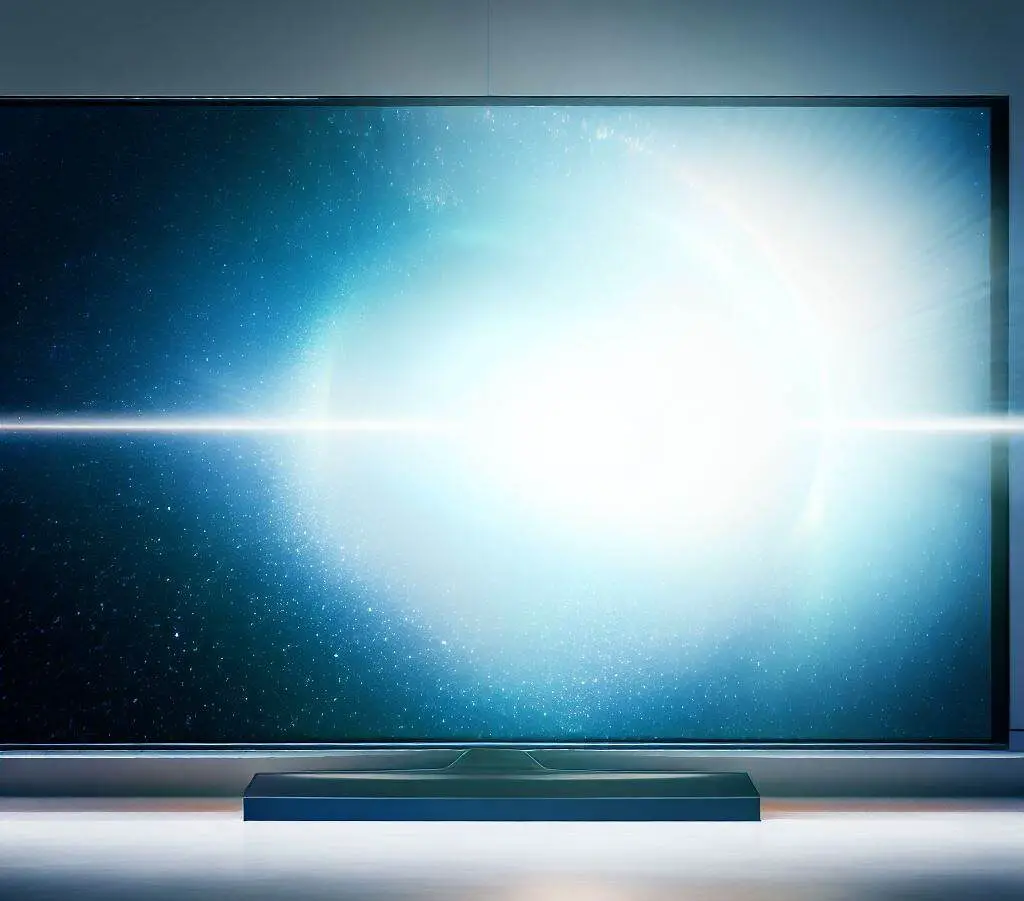When Samsung TVs are working well, they offer some of the best viewing experiences. But when there’s a technical glitch, such as bright spots on the screen, the quality and enjoyment can dramatically decrease.
The good news is, there are multiple solutions to this common problem and they can typically be fixed at home with a little time, effort, and patience.
Quick Answer: How to Fix Bright Spots on Samsung TV
If you’re experiencing bright spots on your Samsung TV, a soft reset, software update, or hard reset may solve the issue if it is software related. But if the reflectors within the TV have shifted and become misplaced, you might have to open the TV for repair, voiding any existing warranty.
Before taking such a drastic step, try simpler solutions like testing different video input sources or adjusting picture and color settings. If your TV is out of warranty, and none of these steps work, you may consider opening and repairing the TV yourself, or perhaps, replacing the TV.
Start Here: Soft Reset, Software Update, and Hard Reset
Bright spots on Samsung TV screens can be very annoying. But don’t worry! You might be able to fix the problem without any invasive repairs. Here are the easiest, and least invasive, methods to try:
- Soft Reset: This can be done by turning your TV off, unplugging it from the power source for a few minutes, then plugging it back in and turning it back on. This simple method can often resolve many common issues with Samsung LED TVs.
- Software Update: Check if there’s a software update available for your TV model. Go to ‘Settings’ > ‘Support’ > ‘Software Update’, and select ‘Update Now’. This process will take a few minutes, and the exact steps may differ slightly from one model of TV to the next.
- Hard Reset: If the above steps do not work, consider a hard reset. This can be done by going to ‘Settings’ > ‘General’ > ‘Reset’. Be aware, this will restore your TV to its factory settings, which means you will lose all your personalized settings. However, having to re-enter your Netflix password will be much quicker and simpler than having to disassemble your TV and make repairs to internal components.
Remember to try these steps one at a time, checking if the bright spots have disappeared after each step. If these don’t work, it’s time to move on to the next stage of troubleshooting.
Checking Video Input Sources and Adjusting Picture Settings
Next, you can try adjusting your picture and color settings. If that doesn’t help, try changing the video input source:
- Adjust Picture Settings: In the ‘Settings’ menu, go to ‘Picture’ > ‘Expert Settings’. Here, you can adjust the picture size, brightness, contrast, sharpness, and color balance. These modifications might help eliminate the bright spots.
- Change Video Input Source: Test another video input source. If you’re using HDMI 1, switch to HDMI 2 or 3, or try streaming from a built-in app. If the bright spots disappear with a different source, it could mean the issue lies with your original source or its cable, not the TV itself.
If the bright spots persist after all this, it might be time for more in-depth troubleshooting.
Diagnosing and Repairing Hardware Issues
If your Samsung TV is no longer under warranty, you’re handy with DIY, and all the software and setting fixes didn’t work, you might need to take a more invasive approach to fix the problem. You could open up the TV and check for hardware issues:
- Listen for Shifting Parts: Tilt the TV gently back and forth, then side to side. If you hear a sound like something sliding inside, this may indicate that the diffusers have fallen off their LEDs. This is likely the source of your bright spots.
- Perform a Self Diagnosis Picture Test: Some Samsung TVs come with a built-in feature that can help diagnose issues. To perform this test, navigate to ‘Settings’ > ‘Support> ‘Self Diagnosis’ > ‘Picture Test’. If the picture test reveals bright spots, you can confirm it’s a problem with the TV, not external sources.
A Note on Opening the TV and Making Repairs
Before you start, remember: opening your TV is a last resort. It should only be considered when your TV is out of warranty, and you’re comfortable with DIY tasks. If you’ve decided to take this route, follow these steps:
- Remove the Back Cover Carefully: Begin by removing the screws holding the back cover of the TV. Make sure you have a soft surface to place the cover on to avoid scratching it.
- Locate the Diffuser: This is the lens over the LED backlights. If any have fallen off, they’ll be responsible for the bright spots on your TV screen. You can usually tell which ones have fallen off because they’ll correspond with the location of the bright spots. (Note that there will be some disassembly required between the above steps #1 and #2 — we are condensing this discussion, because you should really watch some step-by-step videos before attempting this repair, and the videos should explain the process quite simply).
- Reattach the Diffuser: Use heat-stable glue to reattach the fallen diffusers back onto the LEDs.
- Replacing the LED Strip: In a worst-case scenario, you might have to replace the entire LED strip affected. This will be more expensive and you will have to order the parts. Make sure to verify compatibility before making the purchase, as not all Samsung TVs use the same parts.
While making the repairs, take extra care not to break the screen, damage the case, or damage any of the ribbon cables inside the TV.
Final Thoughts
The whole process might seem daunting, but in many cases, these solutions can fix those pesky bright spots on your Samsung TV screen.
Lastly, remember that TVs are becoming more of a “throwaway” product. If your TV is 3-4 years old, and the cost of professional repair exceeds the value of the TV, it might make more sense to upgrade to a newer model.
Remember, there’s no one-size-fits-all answer, but with some patience and troubleshooting, you should be able to identify the best course of action for your situation. Good luck with your repairs, and happy viewing!
FAQs
How can I avoid voiding my warranty while trying to fix the bright spots on my Samsung TV?
If your TV is still under warranty, it’s always best to contact Samsung customer service for help. Opening your TV will void the warranty, so it’s best to avoid that unless the TV is out of warranty and you’re comfortable with DIY.
Are bright spots on a Samsung TV always a sign of a major issue?
Not necessarily. Bright spots can often be fixed by simple methods such as a soft reset, software update, or changing the video input source. More serious issues like shifted reflectors might need invasive repair.
What’s the best way to prevent bright spots on my Samsung TV?
Preventing bright spots is difficult as they’re often due to age and use. However, keeping your TV’s software updated and avoiding harsh lighting conditions can help extend the life of your TV. Be especially careful with LED TVs during moving and handling, since parts can become dislodged. And maintain adequate ventilation to the TV to prevent overheating and subsequent degradation of parts.
What should I do if the diffuser has fallen off?
If your TV is out of warranty and you’re comfortable with DIY, you can try reattaching it using heat-stable glue. If the issue persists, consider replacing the LED strip.
Is it worth it to repair my old Samsung TV?
This depends on several factors such as the TV’s age, repair costs, and your comfort with DIY. If the cost of professional repair exceeds the value of the TV, and you’re not comfortable with DIY, it might make more sense to upgrade to a newer model.


